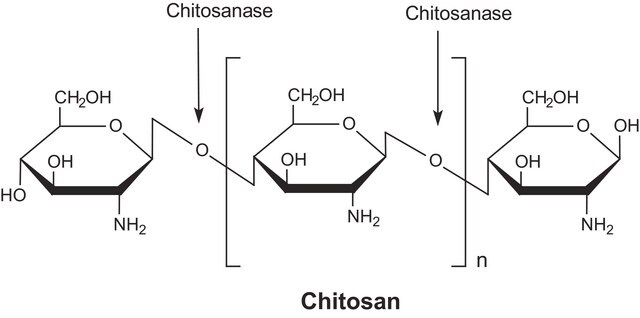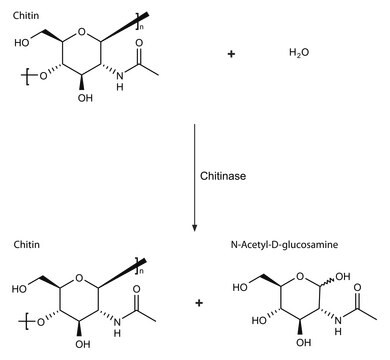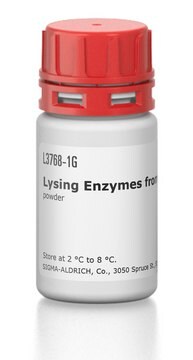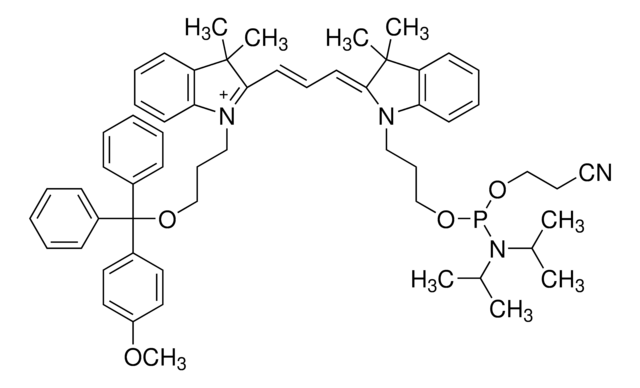220477-M
Chitosanase, Streptomyces sp. N174
Chitosanase, Streptomyces sp. N174, CAS 51570-20-8, is a member of a new class of enzymes with antifungal properties. Efficiently catalyzes the hydrolysis of acetylated chitosan (0 to 60%).
Synonym(s):
Chitosanase, Streptomyces sp. N174, Chitosan N-acetylglucosaminohydrolase
About This Item
Recommended Products
Quality Level
form
liquid
specific activity
≥25 units/mg protein
manufacturer/tradename
Calbiochem®
storage condition
OK to freeze
avoid repeated freeze/thaw cycles
pI
7.5 (temperature optimum 65°C for 10 minutes; recommended temperature 37°C)
foreign activity
chitinolytic ≤0.01%
proteases <0.25 Azocasein U/ml
storage temp.
−20°C
General description
Warning
Unit Definition
Physical form
Reconstitution
Other Notes
Cuero, R.G., and Osuji, G.O. 1995. Food Addit. Contam. 12, 479.
Fukamizo, T., et al. 1995. Biochem J. 311, 377.
Li, T., et al. 1995. Plant Physiol. Biochem. 33, 599.
Fukamizo, T., et al. 1994. Biochim. Biophys. Acta 1205, 183.
Osswald, W.F., et al. 1994. Plant Cell Physiol. 35, 811.
Legal Information
Storage Class Code
10 - Combustible liquids
WGK
WGK 1
Certificates of Analysis (COA)
Search for Certificates of Analysis (COA) by entering the products Lot/Batch Number. Lot and Batch Numbers can be found on a product’s label following the words ‘Lot’ or ‘Batch’.
Already Own This Product?
Find documentation for the products that you have recently purchased in the Document Library.
Our team of scientists has experience in all areas of research including Life Science, Material Science, Chemical Synthesis, Chromatography, Analytical and many others.
Contact Technical Service




